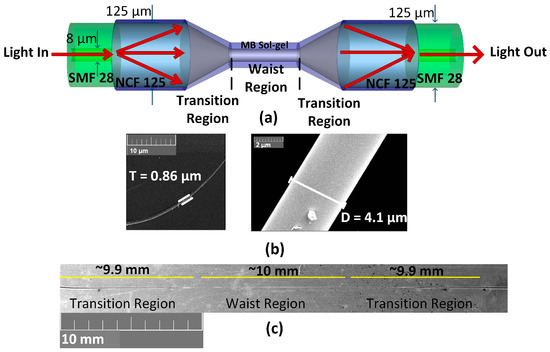Increasing Output Accuracy with an Optical Fibre Diameter Analyser
Increasing Output Accuracy with an Optical Fibre Diameter Analyser
Blog Article
Optimize Your Fiber Optic Efficiency: Recognizing Optical Fiber Size Analyser Modern Technology
The efficiency of fibre optic systems is critically influenced by the precision of their size, an aspect usually overlooked in the quest of optimum signal stability. Recognizing the technology behind optical fiber size analysers discloses the complex equilibrium in between measurement precision and production high quality. These tools not just improve compliance with market standards however likewise supply real-time understandings that can preemptively address prospective issues. The ramifications of their use prolong beyond mere dimension; they can basically change the landscape of fiber optic effectiveness. What elements should one consider to harness their complete potential?
Value of Optical Fiber Diameter
The size of optical fibre plays a critical function in figuring out the efficiency and performance of interaction systems. Conversely, smaller diameters tend to support fewer modes, which can improve signal clearness and decrease crosstalk.

Furthermore, comprehending the diameter's implications can lead to cost savings by lowering the requirement for signal amplification and repeaters in considerable networks (optical fibre diameter analyser). Finally, the relevance of optical fiber diameter can not be overemphasized, as it straight influences the overall effectiveness and dependability of contemporary communication systems

How Size Impacts Signal Quality
Signal high quality in optical fibre systems pivots considerably on the size of the fibre. A smaller sized diameter can lead to greater depletion rates, resulting in signal loss as light trips via the fibre.
Alternatively, bigger sizes generally permit for enhanced light capture and reduced modal diffusion, enhancing signal clearness. In multimode fibers, a larger core size can support several light settings, however it might also introduce intermodal dispersion, which can deteriorate signal top quality. Selecting the ideal fiber size is crucial for achieving the preferred efficiency in specific applications.
In addition, the communication between the fiber diameter and the wavelength of the light used plays a vital function in determining the effective transmission distance and general signal stability. Recognizing exactly how fibre size impacts signal top quality is important for network designers and designers aiming to enhance optical fiber systems for reliable, high-speed data transmission.
Review of Diameter Analyser Innovation
In lots of optical fiber manufacturing processes, precise dimension of fiber diameter is necessary for ensuring consistent efficiency and top quality (optical fibre diameter analyser). Size analysers are sophisticated instruments created to examine the physical measurements of optical fibres with high precision. They use advanced optical and laser technologies to determine the size, ovality, and concentricity of the fiber, hence providing vital information for top quality control
These analysers can run in-line during the manufacturing procedure or as component of off-line screening methods. In-line systems enable real-time surveillance, permitting producers to change specifications quickly, thereby keeping ideal production problems. Off-line analysers, on the various other hand, give detailed examinations of sets, ensuring that any discrepancies from specified tolerances are determined and addressed.
Diameter analysers substantially add to the decrease of defects in optical fibres, improving overall item dependability. By consistently measuring key parameters, these innovations facilitate compliance with market criteria and specifications. As the demand for high-performance optical fibers remains to climb, the duty of diameter analysers becomes increasingly essential in achieving view it the desired top quality and performance standards in fiber optic systems.
Key Attributes of Fibre Size Analysers
Although different designs of fiber size analysers exist, they generally share several crucial attributes that improve their performance and integrity. One of one of the most considerable features is high-resolution dimension abilities, which ensure exact diameter analyses, vital for maintaining top quality control in fibre manufacturing. In addition, many analysers incorporate sophisticated optical sensors made to discover minute variations in fiber size, hence giving important information for process optimization.
An additional essential attribute is real-time monitoring, permitting operators to get immediate comments on fiber diameter throughout the production procedure (optical fibre diameter analyser). This ability promotes rapid modifications and reduces the probability of problems. Several analysers also come furnished with straightforward interfaces, allowing drivers to conveniently navigate with setups and information results
Furthermore, durable information storage and analysis performances are essential for tracking historical efficiency fads and guaranteeing conformity with industry standards. Some designs also supply connection choices for assimilation into existing manufacturing control systems, improving overall operational efficiency. Lastly, mobile and small designs permit for flexible deployment within production environments, guaranteeing that high quality guarantee procedures are seamless and efficient. These features collectively add to the efficiency of fiber diameter analysers in optimizing fibre optic efficiency.
Ideal Practices for Fiber Optimization

First, routine calibration of optical fibre size analysers is necessary. This makes sure accurate measurements and reduces prospective discrepancies that can affect efficiency. Next, maintaining a tidy workplace is essential; dust and contaminants can bring about indicate degradation.
Additionally, it is very important to select fibres that satisfy details application requirements. This entails assessing aspects such as depletion, data transfer, and ecological conditions. Appropriate installation strategies should likewise be stuck to, including staying clear of sharp bends and excessive tension, which can endanger fiber integrity.
In addition, employing sophisticated surveillance systems can facilitate real-time performance evaluations, enabling prompt identification of concerns. Regular testing and maintenance need to be conducted to ensure that fibers continue to be within optimum operational parameters.
Finally, training employees on the latest fiber optimization innovations and methods will certainly improve their capability to carry out reliable approaches. By adhering to these best practices, organizations can substantially boost the efficiency and life-span of their optical fiber systems, ensuring efficient communication and data More about the author transfer.
Verdict
In final thought, the integration of optical fiber size analyser innovation is critical for maximizing fiber optic performance. By ensuring specific dimensions of fibre measurements, these analysers substantially enhance signal quality and reduce losses during information transmission.
Signal top quality in optical fiber systems pivots considerably on the diameter of the fiber.In lots of optical fibre manufacturing procedures, precise dimension of fibre size is necessary for guaranteeing consistent efficiency and quality. As the demand for high-performance optical fibers continues to climb, the role of size analysers becomes progressively essential in achieving the wanted quality and performance criteria in fibre optic systems.
These functions collectively add to the efficacy of fiber size analysers in optimizing fiber optic efficiency.
In conclusion, the combination of optical fiber size analyser technology is vital for optimizing fiber optic efficiency.
Report this page